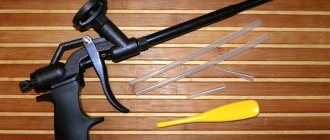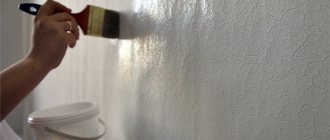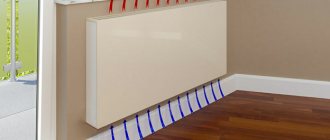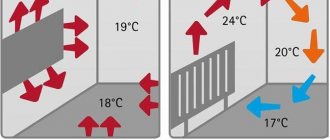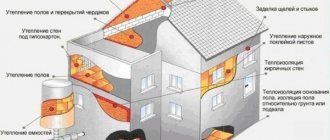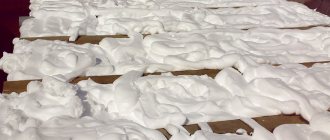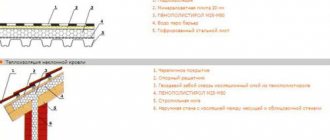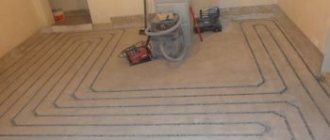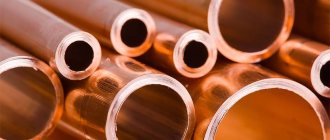Even at the stage of planning and construction of a building, the basis for its safety is laid. The quality of a building is determined primarily by its fire protection. This is especially important when it comes to buildings where large crowds of people are planned.
Typically these are shopping and business centers, production, warehouse or administrative premises. Fire protection is also necessary in rooms where high-power heating elements are installed (baths, saunas) or open fire can be used (cafes, restaurants, clubs, discos).
To protect against the spread of fire, minimize the consequences of fires and the risk of their occurrence, a variety of methods are used. Among them are the application of fire-retardant paint or coating to finished structures, the use of fire-resistant building and finishing materials. Auxiliary materials may also have fire-resistant properties. For example, fire-resistant polyurethane foam. Its use allows you to isolate the flame, prevent its spread, and also protect the premises from toxic combustion products.
This material appeared relatively recently. Externally and during application, it is almost completely identical to conventional polyurethane foam: it does not flow down vertical surfaces, expands several times after application, and easily penetrates even into hard-to-reach cavities. Fireproof polyurethane foam adheres perfectly to any surface, be it glass, concrete, wood, brick, metal or plastic. After hardening, it becomes rigid, due to which it is used to fix window and door blocks, frames, boxes, as well as to protect installation holes around wiring, the space between pipes and other structural elements from fire.

Foam allows not only to securely fix various structures, but also to ensure their tight fit, which protects against the penetration of gases, sounds and moisture. After polymerization (hardening), fire-resistant polyurethane foam is able to resist the effects of open fire and at the same time, throughout the entire period of operation, it is not susceptible to moisture and often accompanying mold or mildew. Due to its insulating properties, it can be used as part of insulating structures.
Any polyurethane foam, including fire-resistant foam, is easy to apply, and after hardening, its excess can be easily removed with a knife.
Compared to conventional polyurethane foam, fire-resistant foam has a greater margin of safety.
Compound
The composition of fire-resistant polyurethane foam is almost identical to regular foam:
- base - liquid polyurethane
- catalysts (enable the use of foam at sub-zero temperatures)
- foaming agents (determine the rate of hardening and level of porosity)
- stabilizers (help with uniform distribution on the surface)
- gas (foams the material after application)
- Fire retardants and graphite determine the fire-resistant qualities of the foam and its color. It is usually red or pink. By this feature you can quickly distinguish ordinary foam from fire-resistant foam.
Application
Fire-resistant polyurethane foam is used primarily where compliance with fire safety standards regulated by regulatory documents is required. Typically this is a professional application in the construction of buildings intended for administrative, industrial and public needs. It can also be used in private construction and renovation work.
Foam with fire-fighting properties is used to fill seams and cracks in fire partitions designed to protect rooms from smoke and fire, in window and door frames. Foam is used to fill hollow spaces inside walls and ceilings, around switches, sockets and connectors, or used as a sealant when installing chimneys, fireplaces and stoves, heating equipment, air conditioning systems and ventilation openings.
Application on objects
Fire-resistant foam is used to fill openings, holes, cracks, cavities in various building structures to their full thickness; as well as for sealing seams formed as a result of the installation of various building parts, installation of electrical products, utility networks, communications in all cases where insulation from fire, heat and smoke of adjacent, thus protected premises is important.
The scope of application of fire-resistant foam is therefore very wide:
- For filling cavities formed during the installation of door and window blocks.
- For sealing holes, openings, leaks at the intersections of walls, ceilings, partitions with pipelines for various purposes - central, local heating, sewerage, water supply; electrical lighting and communication cables; ventilation air ducts, incl. smoke removal systems, air pressurization; cracks around chimneys of heating units, stoves, fireplaces where they pass through building structures.
- When installing electrical switches and sockets.
- Fixing, thermal insulation of heating equipment operating on gas, liquid, solid fuel.
- When insulating attic floors of buildings to increase the fire resistance of interface units and structures in general.
- When performing roofing work on unmaintained types of roofs.
- Thermal and sound insulation, sealing of cabins, engine compartments of vehicles, boats, boats, internal partitions of buildings.
- In rooms with high air temperatures, fire danger - various industrial premises, boiler rooms, baths, saunas.
This list is incomplete, because fire-resistant foam can be used instead of the usual mounting foam, bearing in mind that it is not inferior to it as a sealant, but has many advantages - from non-flammability, unlike conventional material, to a wider temperature range of use, and the ability to operate at low and high ambient temperatures.
Fire resistance class
The time during which fire-resistant polyurethane foam can resist an open flame depends on its fire resistance class. It is indicated by special markings on the packaging:
- IN 1
- AT 2
- AT 3
The most resistant class to high temperatures and open flame is B1. Foam with this marking does not support combustion for the longest period of the rest. This material is used for the installation of stoves, fireplaces and other objects that create an increased fire hazard.
B2 is a medium fire-resistant foam that melts under high temperatures and releases a small amount of toxins. It goes out on its own when the open flame is removed. Suitable for sealing heat, water and sewer lines.
The B3 marking indicates flammable polyurethane foam; it is better to avoid using it for fire protection purposes.
Fireproof foam manufacturers
- Hilti is a brand from Liechtenstein with its own research center, known for its exemplary 2-component CP660 and 1-component CF-JI. The products are expensive, of excellent quality. Download: Hilti CP 660 certificate.pdf
- NULLifire is an American company that produces inexpensive, mainly 1-component mixtures of the FF line (197, 177), Flame Shield NBS. Download: certificate NULLifire FF197.pdf
- Soudafoam – Belgian manufacturer, European quality. Under the Soudal brand it produces 1 and 2 component products: Fr, Comfort, Fr CLICK and FIX. High price segment, fire resistance record holder (EI360). Download: Soudal Soudafoam certificate.pdf
- Makroflex is a Finnish manufacturer. Spray cans with a characteristic green color are expensive. The range of fire-fighting mixtures is minimal: one PRO FR77.
- Tytan (Selena Group) – fire-resistant installation product is represented by 1-component Professional B1. Proven product at an average price. Download: Tytan Professional B1 certificate.pdf
- Penosil (Krimelte) is an Estonian brand. Familiar with 1-piece, expanding Fire Rated Gunfoam B1. A kind of standard in the low-price segment.
- DKC – AF FOAM RM, AF GRAFHIT FOAM (one and two components). High-quality compositions, appropriate price.
- Fome - produces fire-resistant building mixture PRO Premium Fire Block Gun Foam and PRO FIRE BLOCK Mounting Foam with a limit of 240 min. Swiss reliability at average prices.
- Remontix – the range consists of PRO 65 FIRE STOP. Low cost, good quality, judging by reviews.
Fire resistance coefficient
In addition to the class, among the characteristics of fire-resistant polyurethane foam, the fire resistance coefficient is very important. It indicates the time during which the material is able to resist open fire at a temperature of 1000°C. Indicated by the numbers 30, 60, 90, 120 and 150, corresponding to the number of minutes during which the foam will not lose its shape and characteristics when exposed to an open flame. Foam with a maximum level of flame resistance and marking 150 is used to insulate chimneys that are constantly exposed to high temperatures.
Most types of fire-resistant foam are able to retain all their properties even during operation at extreme temperatures (from -60 to +100°C).
Fireproof foam: how to choose?
To make the right choice, it is necessary to determine the nature of the task for which foam is required.
For normal installation work, it is sufficient to use fire-resistant foam with values not exceeding EI 60. This will be sufficient for sealing door structures or windows. When carrying out work to insulate openings and cracks in the main wall, installation holes, and filling voids, a material with higher performance is required, for example, EI 240. When choosing, you should take into account the design features of the building, the characteristics of the floors and walls where fire-retardant foam will be used.
Our store offers a wide selection of fire-resistant foam with various characteristics. Our manager will help you choose the right material.
Added: 06/19/2020
Types of fire-resistant polyurethane foam
Fire-resistant foam is classified according to various criteria: temperature conditions during application and during operation, composition, fire resistance class, consumption, scope of application and others.
Depending on the season, polyurethane foam is divided into winter and all-season. Winter foam is applied to the surface at temperatures down to -18 degrees without loss of fire-resistant and other qualities. All-season foam is applied only in summer or spring/autumn. The minimum air temperature threshold for it is not lower than -10 degrees. However, the optimal surface temperature for applying polyurethane foam is +5-30 degrees, and the material itself must have a temperature of no less than +10 and no more than +30 degrees Celsius.
When using foam in cold weather, keep in mind that it will expand less when applied, so that in the end its volume after hardening will be less than after use at higher temperatures.
Based on their composition, the foam is divided into one-component and two-component. The first hardens at normal air humidity. Before applying it, it is recommended to moisten the surfaces, as this increases its adhesive properties. It is even better if the surface is thoroughly cleaned and primed.
The second type of foam is supplemented with substances that make it harden faster. For low temperatures, only two-component foam can be used.
Consumption
The manufacturer indicates the approximate consumption of foam mass on the packaging. Usually 1l. sealant gives an expansion of up to 30–45 liters. An average of 10 liters is consumed per 1 sq.m. sealant with a seam depth of 35–40 mm. But these figures are very conditional, since the expansion is influenced by the following factors:
- Application temperature. The lower the temperature, the less expansion.
- Winter types of fire-resistant material expand less.
- Method of application. The mounting gun provides more economical consumption.
- Work experience. With insufficient skill, consumption can increase 2–3 times.
When purchasing a mixture for self-application, take a small supply. Optimal working conditions: temperature +18 - +22˚С, humidity 75%.
In addition to the manufacturer’s recommendations, you can use an online calculator on the Internet to roughly calculate consumption.
How much foam do you need to complete the job?

The recommended seam thickness when applying polyurethane foam is 5-10 cm.
Typically, the manufacturer indicates the approximate level of foam consumption per unit area on the packaging. In fact, the consumption depends on many conditions: the width of the surface being treated, the thickness of the seam, the depth of penetration, uniformity of application, ambient temperature, foam composition, manufacturer and professionalism of the craftsman. But in any case, one more cylinder will never be truly superfluous.
Rules for storing fire retardant foam
The heat-resistant mixture in a cylinder is stored for an average of 6 months, 1 - 1.5 years. Sometimes sellers specifically write that the products are “fresh”. After manufacturing, chemical processes begin to occur inside the cylinder. The fire-resistant composition begins to thicken and become viscous.
There are two options for the behavior of an expired product (in all cases, the guarantee for the result is lost):
- use is possible, but difficult;
- due to its thickness, the foam will not be able to come out and create the desired consistency.
It is recommended to keep the cans at low temperatures (the mixture is not affected by cold). The composition becomes viscous, so before use it must be kept warm and shaken well.
Advantages and disadvantages
The main advantage of fire-resistant polyurethane foam is that it does not ignite even under the influence of open fire for the period specified in the marking. After its expiration, the foam will still catch fire, but when the exposure to the fire ceases, it will go out on its own. At the same time, it will not melt and flow or drip due to high temperatures, creating additional danger.
The disadvantages of polyurethane foam with fire-retardant properties include exposure to ultraviolet radiation during operation. If the mounting seams on which the foam is applied are open and exposed to sunlight, then over time it will lose its fire-resistant properties and may simply collapse. To prevent such a situation, seams with hardened foam are protected with putty, covered with a layer of cement or painted.
Recommendations for use
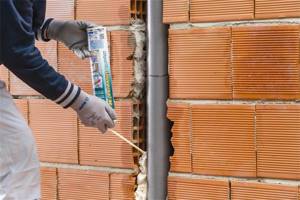
Fire-resistant materials keep the seam width up to 10 cm.
For the composition to work correctly, adhere to the following rules:
- During installation, the plane is heated to +35°C, and the balloon itself is heated to +10 - +30°C;
- the surface is moistened to increase adhesion and accelerate polymerization;
- when filling, lay on 1/3 of the seam, taking into account the expansion of the mass.
Any foam is protected from external factors. For this purpose, plaster, moisture-resistant sealants, putty and painting are used.
Before use, shake the container for 20-30 seconds to combine the components and increase the pressure. When applying, hold the container with the valve down. The duration of polymerization depends on the room climate and humidity.
Consumption
For calculation, measure the width and depth of the gap . Multiply the values to get the product consumption per 1 linear meter. The weight of the foam on the label is indicated in liters, so the resulting volume is multiplied by the volumetric weight of the foam.
Valera
The voice of the construction guru
Ask a Question
Typically, one 750 ml cylinder is enough to treat one doorway when installing the unit, plus another half of the next one. It is difficult to accurately calculate the volume, since the foam expands not only in the area of the gap, but also comes out above it, so the excess after hardening is cut off with a knife.
Properties of Macroflex foam
The following properties and features of Macroflex foam 750 ml can be highlighted:
- Excellent adhesion to any hard materials. The liquid composition interacts best with concrete, brick, wooden surfaces, glass, plastic, metal, and cellular concrete.
- To obtain the most reliable connection, it is advisable to remove dust from the working surface. For example, wet it. However, the presence of ice or frost on the surface will negatively affect the quality of the connection.
- Any atmospheric influences cannot harm the hardened Macroflex foam. Only UV radiation has a negative effect on it, under the influence of which the polyurethane foam gradually breaks down and begins to crumble. This is a mandatory condition that must be observed when installing external structures. Frozen seams must be covered with some material. These can be metal, wood, plastic trim or corners, as well as plaster, cement mortar or paint.
- It is recommended to use Macroflex for filling cracks of at least 0.5 cm and no more than 8 cm. In cracks that are too narrow, the composition may not penetrate to the required depth, and the walls of cracks that are too wide will not be able to hold a heavy viscous mass.
- Liquid, just applied foam has a slight smell of polyurethane. After hardening there are no odors.
- The frozen mass is sensitive to high humidity. Water absorption of Macroflex 750 ml is 10%. That is, when left in water for a long time, the material becomes saturated with water, which gradually penetrates the cells and destroys them.
- Cured Macroflex foam is not toxic or harmful to humans. There are no foreign secretions from its surface.
Video: Foam “Macroflex”
Where is Macroflex used?
Among the areas of application of Macroflex 750 ml, the following areas should be noted:
- Filling voids and depressions on wall surfaces during the renovation of premises.
- Sealing voids during the installation of sewer, water supply and climate control systems, installation of new windows, window sills and doors.
- Filling joints during roofing and plastering work.
- Insulation of surfaces, since hardened polyurethane foam is a porous material with low thermal conductivity.
Video: Real test of polyurethane foam. Titan - Macrofleck
Let's talk about brands
Among the manufacturers known on the market are Titan, Macroflex and Penosil. But this is not all...

Titan – the brand produces several types of MPs that differ in their specific focus and capabilities.
Along with conventional MPs, Titan's assortment includes foam with increased sound-proofing properties, with a fire-resistant filler (Titan Professional B1), as well as several types of multi-temperature MPs.
Macroflex. Russian manufacturer producing a full line of construction foam.
Household and professional MP, for different temperatures, with enhanced adhesive ability, with improved thermal insulation properties, etc.
Foamed. Wide range (about 20 types of MP). Personally, I have been using Penosil for several years. And I can only say good things about him. Excellent combination of price and quality…
Presented in two series: PENOSIL Gold, intended for professional builders, including fire-resistant and for different seasons, and a household series, PENOSIL Premium, whose element is used in major and local repairs.
There are a lot of other manufacturers, but many will ask this question: how to choose? I recommend buying well-known brands from a good seller. There are plenty of bodygas filled with some kind of gas (including one that is hazardous to health) and containing much less foam than stated.
Step-by-step application instructions
Instructions for use:
- The base is cleared of debris and dust. It is then prepared by moistening it with water.
- The suitable temperature for applying foam is 20 degrees Celsius. The cooled cylinder should be kept indoors for some time if it was brought from outside in frosty weather. After this, they are immersed in warm water, but strong heating is prohibited.
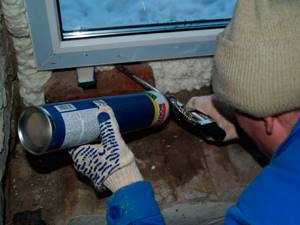
Using foam to install window structures
- The cylinder is shaken and inserted into the gun.
- The seams are filled with the foam composition of the balloon. If vertical surfaces are treated, the sealant is applied from bottom to top.
It is recommended to wet the foam with water to catalyze the expansion and hardening process. This prevents the formation of droplets. It is enough to use a fine spray.
Types and technical characteristics
To obtain a reliable, tight seam, you need to take into account not only the temperature, but also humidity, the position of the work area, the width of the voids, and the volume of work. In order for the building material to cope with each task, there are different types with certain fillers. Depending on the volume of work, foam can be:
- Household. Available in small volume cylinders with a dispenser tube. Suitable for small repair areas, does not require additional equipment.
- Professional. Has article number PRO and is designed for large installation volumes. To use it you need a special gun.
According to seasonal use:
- Winter. Designed for outdoor construction work at temperatures from -5˚C, high humidity. They have permissible lower temperature limits of use down to -60˚С.
- Summer. Use indoors or for external installation is allowed in the temperature range from +5 to +35˚С, humidity not more than 80%.
- All-season. The most versatile for outdoor work in rapidly changing weather conditions. Permissible operating temperature is from -10˚С to +35˚С, relative humidity 75%.
By chemical composition:
- Two-component. The cylinder is divided into two cavities: one contains the main composition, the other contains the polymerizing reagent. Under pressure, both components are squeezed out and mixed directly in the tube. Opened packaging cannot be stored, therefore it is produced in a volume of no more than 220 ml.
- One-component. It costs less and has a shorter shelf life. The curing reaction occurs due to moisture and begins to take place already in the cylinder. Has a higher degree of expansion. After opening the package it can be used repeatedly.
According to the degree of fire resistance:
- Category B I – non-flammable composition.
- Category B II – self-extinguishing when burning.
- Category B III – flammable.
Frost-resistant mounting foam for external use has the following technical approvals:
- Operating temperature: from -10 to +35˚С. Some materials remain functional at -30˚C.
- Expansion coefficient of working mass volume: usually this figure is 1/100. That is, from 100 ml. You can get 10 liters of material in a cylinder. foam at the exit.
- Porosity from 50 to 85%. The higher the porosity, the better the thermal insulation.
- Adhesive properties. Polyurethane foam materials have high adhesion rates to stone, wood, metal, and concrete. Not suitable for Teflon and plastic substrates.
- The higher the viscosity, the better the sealant holds its shape and does not flow off the base.
- Drying time. Depends on temperature and humidity. Winter foams take from 5 to 12 hours to set.
- Shrinkage should not exceed 5%.
Soudal
Professional polyurethane foam, which can be purchased at most hardware stores. It has low expansion and is suitable for thin joints where accuracy of application is especially important.
Soudal has high adhesion not only to brick or concrete, but also to metal or glazed surfaces. The tip is included, so the cylinder can be used not only with a construction gun.
Advantages:
- Size stability;
- Homogeneous texture;
- Ease of application;
- Complete protective gloves.
Flaws:
Can't be washed.
Users note in reviews that they come across defective cylinders with a poorly functioning valve.
Fire-resistant qualities are especially important when applied in rooms with high temperature conditions: baths, factories, restaurants, nightclubs and other entertainment venues. Fire retardants are added to their composition, giving non-flammable properties to the entire composition. After analyzing this market segment, 3 leaders were identified that professionals prefer to buy.
This is interesting: Heat-resistant adhesive for metal - pros and cons
Now about the types of MP (there are two of them)
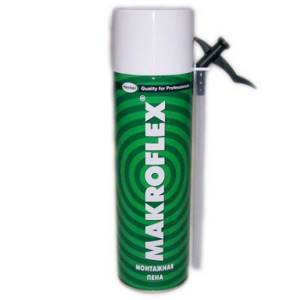
Household option
Household and professional. The main external difference is the method of exit from the can.
Household. The external sign of a household MP is a plastic nozzle (adapter tube) attached to the cylinder. Well, if you look closely, the initially invisible signs include: a smaller volume of the working mixture, greater expansion (secondary), certain inconveniences during work and “offensive” disposability. Then the foam in the tube dries up...
Professional. The first sign here is a mount designed for use only “in tandem” with a mounting gun. It is more convenient and better to work this way, and special solvents are available to clean MP residues. Although, I practically never use them (I always finish the cylinder and insert a new one). A charged cylinder sits with the gun for half a year (in winter) and there are no problems...
On the “Pro” canister, there is a ring valve that matches the thread with the gun adapter. The working mixture, after pressing the trigger, is activated by gas pressure and rushes along the rod (barrel), dissipating through the outlet valve (nozzle).
In this case, the substance under pressure penetrates into the cavity of the tool and is restrained only by a valve controlled by a trigger. The adjusting screw allows you to control the pressure. The foam yield from one household cylinder is significantly less than that of a professional one. And the expansion (after the release of the reagent), on the contrary, is greater.
Application of the material: rules and relevant cases
Each package of foam has standard instructions for use and is used at each stage of construction work. When renovating a house or apartment, the composition often functions as a sealant. If we consider the specific application of the mixture, then the following cases will be relevant:
- Sound insulation with polyurethane foam.

- Sealing and sealing of cracks, joints when installing plastic windows and other structures.

- For sealing holes when laying pipes and communications.

- Acts as a fastener for installing foam plastic.
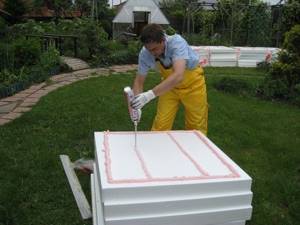
- Provides sound insulation and can act as a noise blocking material.

Features of use are based on compliance with the following basic rules:
- You must first prepare the area to be treated with foam and clean it of dirt, dust or other substances.

- Protect your hands by wearing rubber gloves, as the foam is very difficult to wash off the skin.

- It is imperative to study the manufacturer's recommendations indicated on the packaging.

- Place the foam canister in the gun, then direct the tube into the desired crevice or surface.
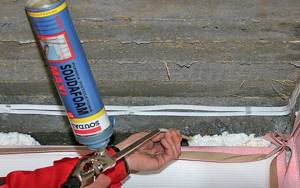
- The seams are filled to one third of the total volume; to speed up the hardening process, you need to sprinkle the mass with water. Under the influence of moisture, polymerization of the substance occurs faster.

- After 15-30 minutes, you can notice that the full expansion of the foam is complete. If there is not enough substance in the openings, you can add a little extra mixture.

- After this, you need to leave the substance for 24 hours to completely harden.

- At the end of the procedure, you need to get rid of excess material. You can use a sharp knife for this, which will help to perfectly level the layer.

Precautionary measures
During repairs and during operation of the substance, it is necessary to take into account not only the properties of the polyurethane foam, its pros and cons, but also observe safety precautions. The main ones:
- The mixture must be used in well-ventilated areas, since its polymerization releases butane and carbon dioxide, which are toxic to humans.
- You need to carry out the work in special clothing and gloves, and cover your eyes with special glasses. If polyurethane foam gets on clothing or skin, you must try to immediately remove it while it is in a liquid state, since after hardening it is difficult to clean.

- The foam container itself must be stored in a dark place, avoid exposure to sunlight, and protect it from fire.

Polyurethane foam is a very necessary and useful thing for repairs, construction, and installation of structures. It can act as a sealant, provide good noise protection, and retain heat. Therefore, it is necessary to approach the choice of substance correctly and consciously, and buy only high-quality products. It is very important to follow the instructions for use to ensure quality and reliability.
